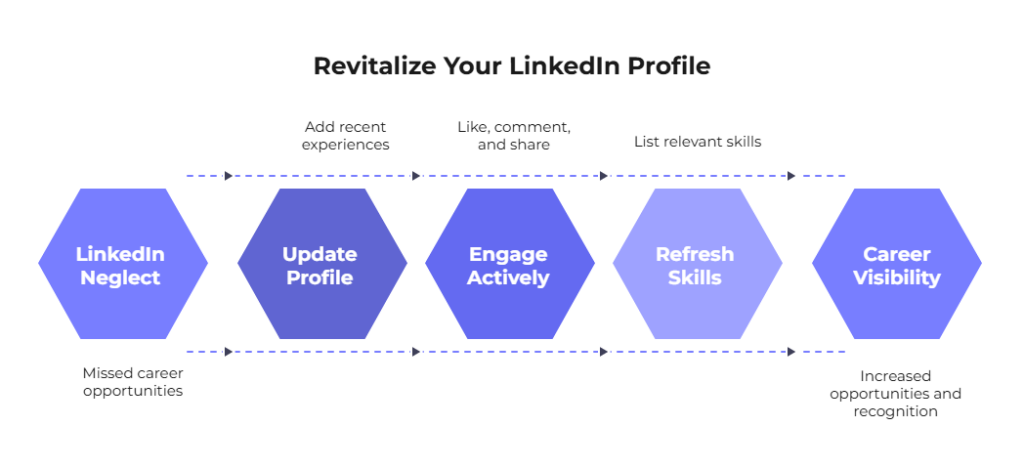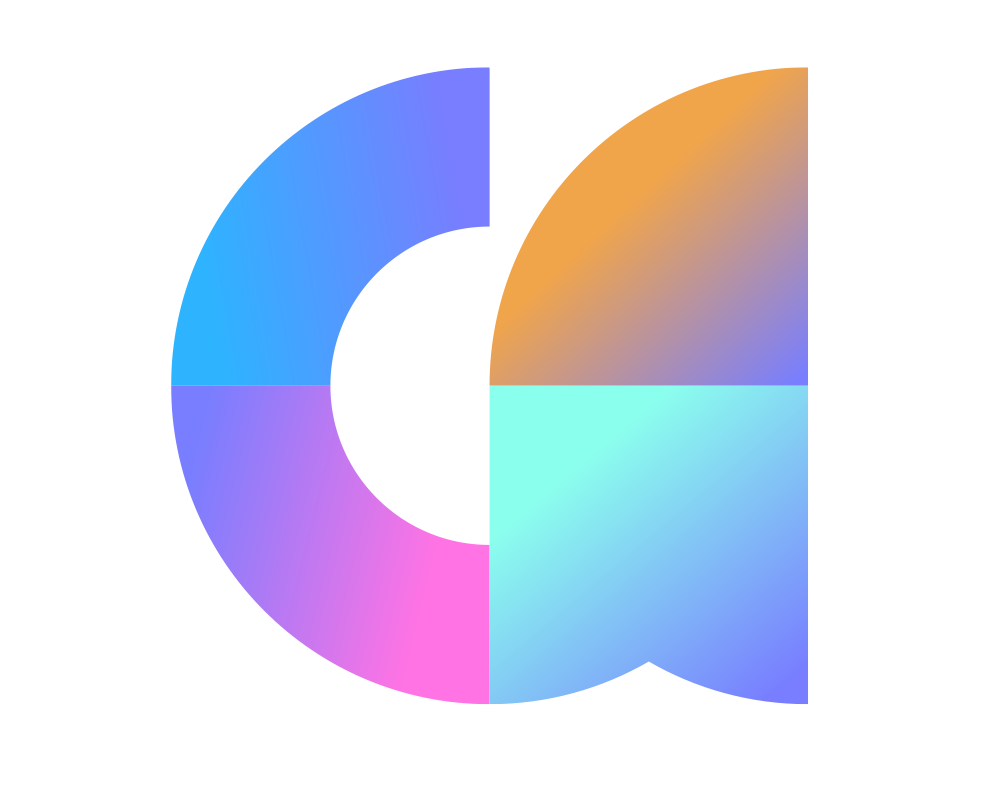The traditional CV is dying a slow death, and most professionals haven’t even noticed. During a recent conversation with a Fortune 500 Head of Talent Acquisition, she revealed something startling: “We haven’t opened a CV first in over two years. LinkedIn is where we start, where we screen, and often where we decide.”
AI hiring software and modern recruitment have fundamentally changed the job search game
This isn’t an isolated trend—it’s the new reality of talent acquisition. Our recruitment teams at byteSpark.ai work with thousands of real-world searches across industries, giving us unique insight into how hiring is evolving and how candidates are being discovered, or overlooked: your LinkedIn profile has become your frontline CV, whether you realize it or not.
Yet our analysis reveals that 73% of professionals treat their LinkedIn as an afterthought, updating it only when actively job hunting. This outdated approach is costing careers, opportunities, and competitive advantage in ways most people don’t understand.
The Invisible Revolution: How Hiring Really Works Now
LinkedIn-First Recruitment is Standard Practice
Modern recruitment follows a predictable pattern that most job seekers don’t realize:
Step 1: AI hiring software scans LinkedIn profiles based on keywords, role titles, and experience markers
Step 2: Recruiters review LinkedIn profiles to create initial shortlists
Step 3: Only then are CVs requested, if at all required
Step 4: LinkedIn serves as the credibility check throughout the process

As one recruitment director told us: “LinkedIn is the new shop window. If your profile doesn’t catch our attention in those first 10 seconds of scanning, we’re moving on to the next candidate.”
What We’ve Learned From AI in Action
From filtering candidate pools to surfacing top talent, byteSpark.ai’s hiring tools rely on advanced algorithms and we’ve noticed consistent patterns that most job seekers never consider. Here’s what our data (and our team) see every day…
AI-powered recruitment tools now used by 67% of companies – don’t read profiles the way humans do. They scan for:
- Exact keyword matches (not creative interpretations)
- Current role indicators (outdated titles get filtered out)
- Skills alignment (must match job requirement terminology)
- Activity signals (when you last updated key sections)
- Completeness scores (incomplete profiles rank lower)
The brutal reality: If your LinkedIn doesn’t speak the language of both AI systems and human recruiters, you’re invisible to most opportunities, regardless of how qualified you are.
The Four Critical Elements of LinkedIn-as-CV Strategy

Element 1: Real-Time Professional Currency
What it means: Your LinkedIn must reflect your current reality, not your job search starting point.
Why it matters: As hiring teams at byteSpark.ai observe daily, outdated profiles create immediate credibility issues. When your LinkedIn shows you as “Marketing Manager” but you’ve been “Senior Marketing Director” for 18 months, it signals one of three problems to recruiters:
- Lack of professional awareness
- Possible role exaggeration on applications
- Disconnection from industry norms
The impact: 43% of recruiters report immediately moving past profiles that seem outdated or inconsistent, even for strong candidates.
Best practice: Update your profile within 48 hours of any role change, promotion, or significant responsibility shift.
Element 2: Strategic Keyword Optimization
What it means: Your profile must contain the specific terms that both AI systems and human recruiters search for in your industry.
The science behind it: Our analysis of successful candidate profiles reveals that those who secure interviews include an average of 23% more relevant keywords than those who don’t. This isn’t about keyword stuffing—it’s about speaking the language of your industry clearly and consistently.
Real example: A software developer who described their experience as “creating digital solutions” got 47% fewer profile views than one who used “full-stack development, React, Node.js, API integration.” Same skills, different discoverability.
Strategic approach:
- Research job postings in your target roles
- Identify recurring terminology and requirements
- Integrate these naturally into your experience descriptions
- Update your skills section to reflect current industry language
Element 3: Authentic Consistency Across Platforms
What it means: Your LinkedIn profile and any CV or application materials must tell the same professional story with the same facts, dates, and achievements.
Why this matters more than ever: With AI hiring software now cross-referencing candidate information across platforms, inconsistencies are flagged automatically. As one Head of TA explained: “When someone’s LinkedIn says they increased sales by 150% but their CV says 125%, it raises questions about attention to detail and honesty.”
The trust factor: Consistent professional narratives build confidence in hiring decisions. Inconsistencies create doubt, leading to candidate elimination even when discrepancies are innocent mistakes.
Quality control checklist:
- Job titles and dates match exactly across platforms
- Achievement metrics are identical
- Company names are consistent
- Educational credentials align perfectly
Element 4: Professional Brand Authenticity
What it means: Your LinkedIn profile should represent your genuine professional value proposition, not a generic template or aspirational version of your career.
The authenticity advantage: In an era where AI hiring software can detect patterns and inconsistencies, authentic profiles perform better than manufactured ones. Genuine professional narratives create stronger engagement with both automated systems and human reviewers.
Real impact: Profiles that showcase authentic professional journeys, including logical career progressions and genuine expertise to receive 34% more recruiter contact than those that appear over-optimized or inconsistent.
The Hidden Cost of LinkedIn Neglect

Opportunity Invisibility
Our data reveals a stark reality: professionals with outdated LinkedIn profiles receive 67% fewer recruitment approaches than those with current, optimized profiles. This isn’t just about active job searching—it’s about career opportunities, internal promotions visibility, industry recognition, and professional network expansion.
AI Algorithm Penalties
LinkedIn’s algorithm prioritizes active, current profiles in search results. Profiles that haven’t been updated in 6+ months begin losing visibility, creating a compounding effect where neglect leads to further neglect.
Professional Credibility Gaps
When hiring teams research candidates, LinkedIn inconsistencies create immediate credibility concerns. As one recruitment expert noted: “If someone can’t maintain their professional profile, we question their attention to detail in their work.”
Strategic Recommendations for LinkedIn-as-CV Success
For Individual Professionals
Monthly profile audits: Treat LinkedIn maintenance like any other professional responsibility – schedule it, execute it consistently, and measure the results.
Keyword research routine: Quarterly, research your industry’s current terminology and adjust your profile language accordingly. Job markets evolve, and your profile language should evolve with them.
Achievement documentation: Update accomplishments in real-time, not during job search periods. Fresh achievements carry more weight with both AI systems and human reviewers.
Network engagement: Active LinkedIn users rank higher in search algorithms. Regular, professional engagement signals current industry involvement.
For Organizations and HR Teams
Employee LinkedIn enablement: Forward-thinking companies now provide LinkedIn optimization workshops for employees, recognizing that strong employee profiles enhance company visibility and recruitment branding.
Internal recruitment integration: Use employee LinkedIn profiles as part of internal mobility and promotion discussions. Current, strong profiles often indicate employees ready for advancement.
Candidate evaluation protocols: Develop LinkedIn review processes that account for profile quality, consistency, and currency as indicators of professional competency and attention to detail.
LinkedIn Recruiter Limitations : Our recruitment teams are using our in-house AI hiring software with state of the art AI capabilities to Source and Shortlist with speed, accuracy & precision, way beyond what we could do with LinkedIn Recruiter.

The Future of Professional Identity
The shift from CV-first to LinkedIn-first recruitment isn’t temporary – it’s a permanent one. As AI hiring software becomes more sophisticated and remote work makes digital professional identity more important, LinkedIn’s role as primary professional documentation will only strengthen.
What this means for professionals: LinkedIn optimization isn’t a nice-to-have skill anymore, it’s a career-critical competency. The professionals who understand this early will have significant advantages over those who treat LinkedIn as secondary to traditional application methods.
What this means for organizations: Companies that help their teams optimize LinkedIn presence will benefit from enhanced employer branding, better talent attraction, and stronger professional networks that support business objectives.
The Choice is Clear: Adapt or Become Invisible
The recruitment revolution has already happened. AI hiring software, LinkedIn-first screening, and digital professional identity assessment are today’s reality, not tomorrow’s possibility.
For job seekers: Your LinkedIn profile is being evaluated right now by AI systems and recruitment professionals—whether you’re actively looking or not. The question isn’t whether you need to optimize it, but whether you’ll do it before or after missing significant opportunities.
For career-focused professionals: LinkedIn maintenance has moved from networking activity to career-critical infrastructure. Treating it as anything less puts your professional growth at risk.
For forward-thinking organizations: Supporting employee LinkedIn optimization is now a strategic advantage, not a HR nice-to-have.
The professionals and companies that recognize LinkedIn as the new CV will thrive in the modern talent market. Those who don’t will find themselves increasingly invisible to the opportunities that matter most.
About byteSpark.ai
Built by recruiters for recruiters, byteSpark.ai uses advanced AI to streamline hiring, surface hidden talent, and improve decision-making across the recruitment lifecycle. Our tools power fast, fair, and scalable hiring for companies who want to find the right people, fast.






